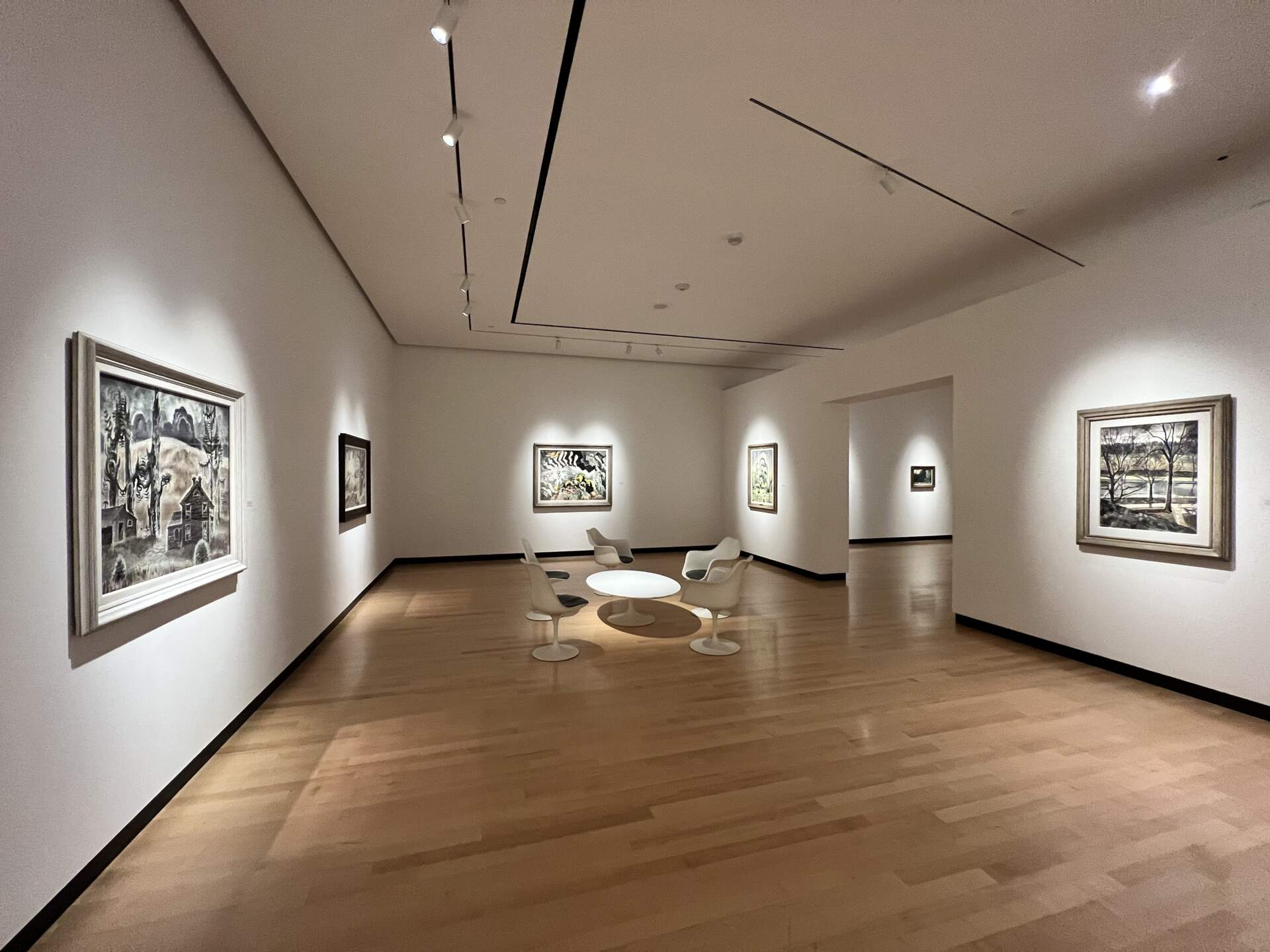
Charles E. Burchfield (1893-1967), The Moth and the Thunderclap, 1961; watercolor and charcoal on paper, 36 x 48 inches; Collection of the Burchfield Penney Art Center, Gift of Charles Rand Penney, 1994
A Clearing View
Charles E. Burchfield Reframed
Past
Oct 13, 2023 - Jan 28, 2024
Charles E. Burchfield was one of the great American artists of the 20th century, but his work is sometimes overlooked as are many works on paper, because they cannot be left on museum walls for years at a time. They are also shown behind glass, which presents viewers with reflections of themselves, distorting the work itself. This exhibition is the beginning of an effort to both literally and metaphorically reframe his paintings and offer an unencumbered view of his brilliant work, properly presented, and celebrated the way it can be today.
The 1930s were an important time in Burchfield’s career. It was during this decade that his work was featured in the first solo exhibition ever held at the then new Museum of Modern Art in New York City. After quitting his job at the Birge Wallpaper company in 1929, Burchfield was finally able to devote all his energy to painting. Around the same time, he started building his own frames to display his work. On August 29, 1934, he wrote in his journal:
Working these last few days again on frames; it is hard work, but at times enjoyable. Even the mechanical uncreative parts, such as rubbing with sand-paper or using the rasp are a physical pleasure, like walking or swimming.
Works from this period, often presented in large dramatic frames with rustic finishes, are excellent illustrations of how Burchfield himself intended for the work to be seen. Most of the best examples have little or no matt bordering the work and are presented in the way one might expect to see an oil painting.
Modern glass, used in everything from windows and lenses to fiberglass and fiber optic cables, is a building block for civilization. In windows, it protects people from the elements. Lens technology has allowed people to see more clearly as their sight fails them. Burchfield himself needed glasses to continue painting. On November 24, 1939, he wrote:
A.M. When I tried to draw in the studio, I found I could not focus on the work at arm’s length. Alarmed, I called Dr. Bennett, who, instead of assuring me it could be remedied, said it presented quite a problem, and would I see him at 5:00 P.M. So I had a bad hour or so, until I reasoned out myself, that an extra pair of glasses, with more space for intermediate work, and less for distance, should do the trick.
In his journals, Burchfield often spoke of weather clearing after a storm as the rain or wind that ravaged the landscape moved away. This exhibition does the same. Like those new glasses, it offers a clearing view of work too long distorted by obsolete glass. By reframing Burchfield’s work, we also re-present his legacy and its importance in a world that needs his love of nature and his focus on the details in the world around us that anyone can connect with and enjoy.
A Clearing View: Charles E. Burchfield Reframed is made possible through the generosity of The Margaret L. Wendt Foundation and the Tower Family Fund. For their meaningful support in memory of Peter Andrews, we gratefully acknowledge Molly and Louise Andrews, along with their families. Our heartfelt thanks, also, to Richard & Janet Wetter and Mrs. John Kociela for their generous additional support.